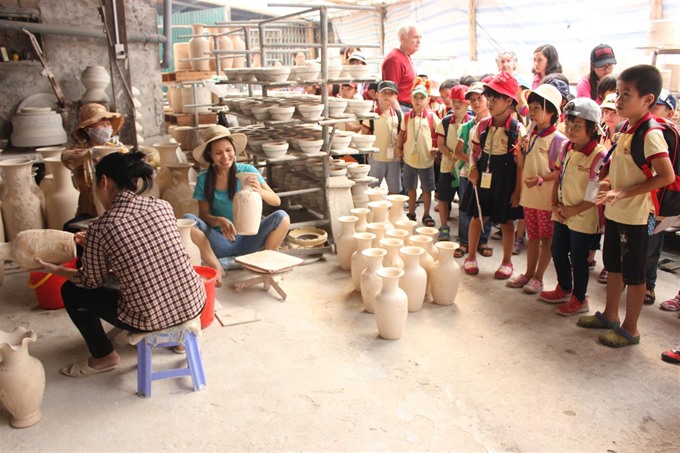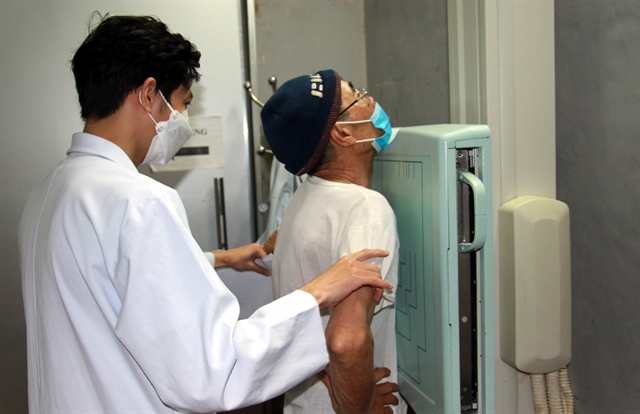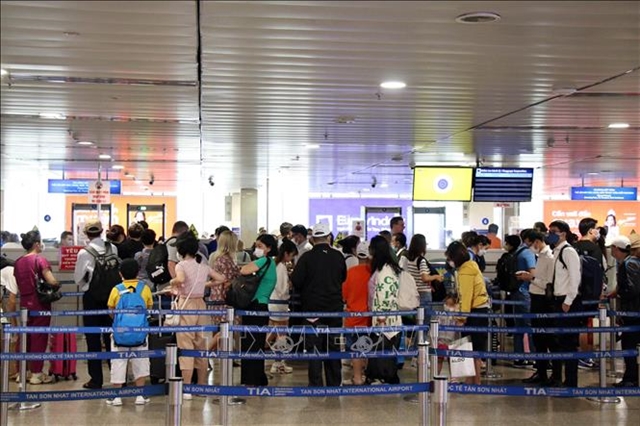 Society
Society

Traditional craft villages of Hà Nội are facing a shortage of labourers, especially skilled workers, reported Kinh tế Việt Nam &Thế Giới (Việt Nam and World Economy) Magazine.
 |
| Traditional craft villages of Hà Nội are facing a shortage of labourers, especially skilled workers, reported Kinh tế Việt Nam &Thế Giới (Việt Nam and World Economy) Magazine.– Photo tripi.vn |
HÀ NỘI – Traditional craft villages of Hà Nội are facing a shortage of labourers, especially skilled workers, reported Kinh tế Việt Nam &Thế Giới (Việt Nam and World Economy) Magazine.
Right now, the city has more than 1,350 traditional craft villages, 45 per cent of total villages nation-wide.
The villages in Hà Nôi are staffed by 176,000 households creating stable jobs for 740,000 workers.
However, there is a shortage of skilled workers.
According to Nguyễn Như Diên, owner of Son Linh Leather Footwear Workshop in Phú Xuyên District, he has a lack of workers.
This, he says, is because many rural labourers have quit their jobs to work in industrial zones where they could earn more money and enjoy better social benefits.
The shortage of skilled labourers is one of the main reasons the villages’ products are not selling well, due to low quality and poor designs.
Phú Vinh Rattan and Bamboo Weaving Village of Chương Mỹ District is also suffering.
Artisan Nguyễn Phương Quang, director of Việt Quang Company said “the village was famous for its products many years ago but it could not develop anymore because of a lack of labourers.”
“For many years, households had gotten used to producing products with few samples. They did not have skilled craftsmen who could create more new designs.
“This meant the products were loosing competitiveness while the demand had been increased year by year, even day by day,” Quang told the paper.
Meanwhile, Hoàng Xuân Thủy, director of Hà Nội Industrial Promotion and Development Consultancy Centre, said training was crucial to solve the problem.
The centre has organised training courses of rattan and bamboo weaving, lacquering, worm-silk weaving, embroidery, and pottery led by artisans.
Training skilled labourers for the craft villages would help households and businesses to increase the productivity and competitiveness in the market, said Thuỷ.
To support the traditional craft villages, the municipal People’s Committee will launch a development plan this year.
Under the plan, the city would offer financial assistance to 14 workshops to invest into advanced equipment for production; supporting 10-12 villages to promote branding activities; and help 20 craft workshops to hire experts designing products for exports.
The city would also open training courses for 24,000 rural workers and give incentives to 40 workshops which were in charge of training jobs for 1,400 workers.
Business management training courses would be given to 1,500 owners of craft workshops.
The city set a target of increasing the production value of the craft village by 10-12 per cent as compared last year, and export turnover of craft products is estimated to reached US$200 million.
The villages would create 433,000 jobs for rural labourers. -- VNS








